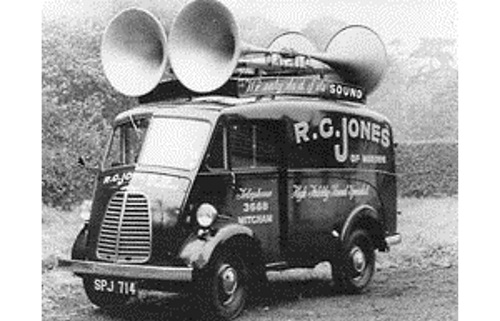
But the changing world of the recording market meant that the studio closed in 2001.
However, the other parts of the company have continued, and it seems the traditional feel and traditional clients have not gone away. RG Jones has worked on projects such as the VE Day and VJ Day celebrations, the Royal Fireworks for Prince Charles and Diana’s wedding, the Papal Visit in 1982, and Princess Diana’s funeral.
While the church installation market is nothing like the USA, RG Jones looks after a great number of these including St Paul’s and Westminster cathedrals.
Of course, these don’t have the same amount of equipment as some of the “super churches” we hear about, but St Paul’s, for example, has a BSS Soundweb network and a number of active line arrays.
Even today, if you are knighted by HM the Queen at Buckingham Palace, you will be called forward to kneel, using an RG Jones sound system. It also looks after the sound systems at Wimbledon tennis club and Lord’s Cricket Ground.
Reginald Jones died in 1987 having passed the company onto his son, Robin, and in 2004, he retired and sold the company to the management team—most of which had been with the company since Reginald had been alive. (Thankfully, they don’t use any of the original stock.)
However, one wonders what a rock concert would have been like of we had moved forward socially faster than we had moved technologically. We would have had intercom systems that you had to turn a handle on before you could speak, touring amplifiers with valves, punch cards to store the memories on effects processors, radio mic signal strength reported on ticker tape…
I tried to think if anyone else was doing amplified sound earlier than that. St. James and his brother St. John, two disciples of Jesus, were known for their loud voices, as was Polyphemus the one-eyed Cyclops from Homer’s Odyssey. Finally there’s Thor, but his repertoire was rather limited. Only Wagner and Black Sabbath need that amount of thunder.
Anyway, none of these count. But if you know of a sound company working before 1926, we would be interested in knowing about it, especially if they are still trading.
Finally, if we were to go back in time to the early days of his company and talk to Reginald about professional audio, he would probably be telling us about this new type of loudspeaker that everyone was starting to use, and that it was transforming his work.
The loudspeaker in question is the “line array”— whatever happened to them?
Roland Hemming is an independent audio consultant and project manager based in London.
